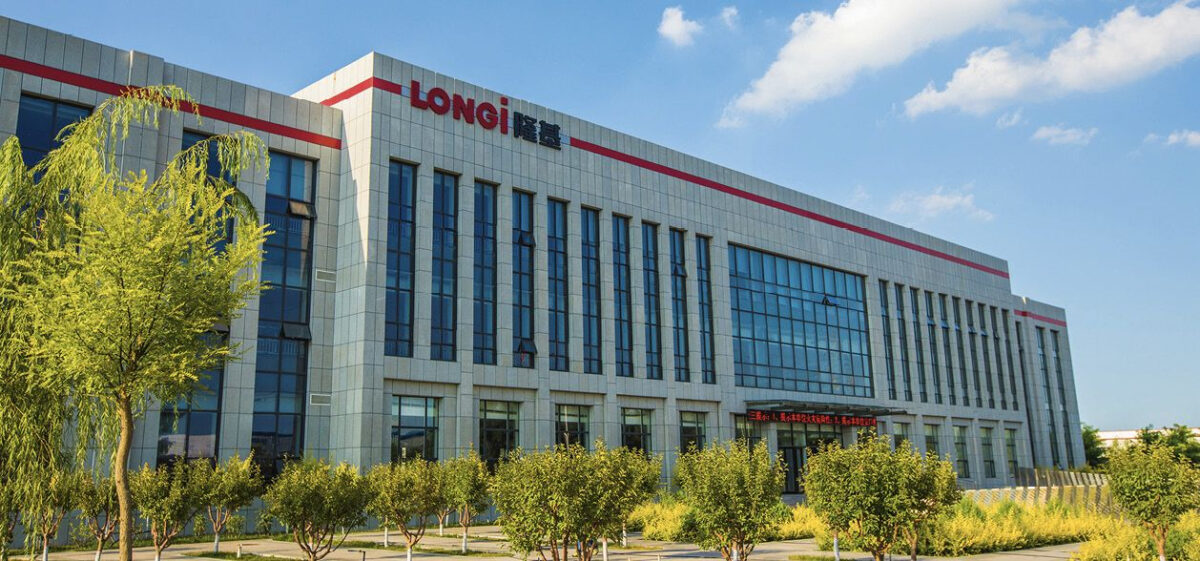
Longi says it shipped 17 GW of back contact modules in 2024 and cut its net loss to CNY 8.62 billion ($1.18 billion), citing tighter inventory control, cost reductions, and higher investment returns.
Longi reported its 2024 annual results and first-quarter report for 2025 on April 29. The company posted annual revenue of CNY 82.58 billion (USD 11.36 billion), a 36.23% year-on-year decline, and a net loss attributable to shareholders of CNY 8.62 billion (USD 1.18 billion), reversing a profit of CNY 10.75 billion (USD 1.48 billion) in 2023. LONGi attributed the poor performance to a vicious cycle in the solar industry involving overcapacity, price wars, and cash flow issues. Chairman Zhong Baoshen acknowledged in the report that 2024 was “the most challenging year since the company went public.” For the first quarter of 2025, LONGi reported revenue of CNY 13.65 billion (USD 1.88 billion), a 22.75% decline year-on-year, with a narrowed net loss of CNY 1.44 billion (USD 197 million), a 38.89% reduction compared to the same period last year. The company explained that the reduction in losses was mainly due to improved inventory management, cost control, and increased investment income. The 2024 financial results also revealed that the company’s revenue from its silicon wafer and silicon rod business dropped 66.53% year-on-year to CNY 8.21 billion (USD 1.13 billion), with a negative gross margin of 14.31%, a 30.19 percentage point decrease from the previous year. Revenue from solar cell and PV module sales fell 33.13% to CNY 66.33 billion (USD 9.12 billion), with a gross margin of 6.27%, down 12.11 percentage points from 2023. However, the company’s power station business showed growth, with a 67.43% increase in revenue to CNY 6.34 billion (USD 872 million), and a 15.71 percentage point improvement in gross margin to 35.11%. LONGi stated its future focus will be on the BC (back-contact) technology route. In 2024, it shipped over 17 GW of BC products and aims for more than 25% of its module shipments to be BC products in 2025, with the cost difference between BC and TOPCon reduced to CNY 0.05/W (USD 0.007/W) through economies of scale.
JA Solar also released its 2024 annual report, revealing a 14.02% decline in revenue to CNY 70.12 billion (USD 9.63 billion), while posting a net loss of CNY 4.66 billion (USD 640 million), marking the company’s first-ever annual loss, surpassing 10% of its net assets at the end of the previous year. In 2023, JA Solar recorded net profits of CNY 7.04 billion (USD 967 million). However, in 2024, the company’s net loss was CNY 4.66 billion (USD 640 million), with the fourth-quarter losses alone reaching CNY 4.17 billion (USD 573 million), accounting for 89.6% of the annual loss. The company attributed the poor performance to an imbalance between supply and demand in the solar industry, plummeting product prices, and asset impairment provisions. Despite an increase in module shipments to 79.44GW (including 1.544GW for self-use), JA Solar’s revenue dropped by 14.77% to CNY 66.63 billion (USD 9.15 billion) due to falling module prices, which were the primary cause of the revenue decline. Debt levels also increased, with the company’s debt ratio climbing to 74.74% by the end of 2024, a historic high. Total debt reached CNY 47.47 billion (USD 6.52 billion), with short-term debt making up 51.84%, adding significant pressure to its repayment schedule. JA Solar expects the photovoltaic industry to experience a weak recovery in 2025 and has set several strategic targets, including controlling module production capacity at 100GW, focusing on N-type products, and maintaining a silicon wafer and battery self-supply rate of over 80%. The company also plans to increase its revenue share from markets in the Americas and the Middle East and North Africa to 30%, reduce trade risks through local production, and continue investing in emerging battery technologies like BC and HJT.
Daqo New Energy reported a loss in the first quarter 2025 of $71.8 million based on unaudited figures, compared to $180.2 million in Q4 2024. Its revenue was $123.9 million for the same period. The company expects to produce approximately 110,000 MT to 140,000 MT of polysilicon for the full year of 2025.
The China Nonferrous Metals Industry Association’s (CNMIA) Silicon Branch reported a significant drop in the price of polysilicon despite low transaction volumes in the spot market. The price for N-type re-invested material ranged from CNY 37,000 to CNY 45,000 per ton (USD 5,083 to USD 6,188), with an average transaction price of CNY 39,200 per ton (USD 5,387), down 2.73% week-on-week. The price for N-type granular silicon ranged from CNY 36,000 to CNY 38,000 per ton (USD 4,946 to USD 5,220), with an average of CNY 37,000 per ton (USD 5,083), declining 2.63%. The price for P-type polysilicon ranged from CNY 31,000 to CNY 35,000 per ton (USD 4,260 to USD 4,812), with an average of CNY 32,300 per ton (USD 4,438), a 2.12% decline. With many downstream enterprises adopting a wait-and-see approach ahead of the May Day holiday, purchasing activity slowed, leading to an increase in inventory at polysilicon producers. The demand-side expectations were significantly below industry average production costs, causing reluctance among polysilicon producers to close deals. Some polysilicon companies are already considering production cuts or halts to adjust to market conditions post-holiday. The association forecasts polysilicon production to remain at around 100,000 tons in May.
This content is protected by copyright and may not be reused. If you want to cooperate with us and would like to reuse some of our content, please contact: editors@pv-magazine.com.
Source link


